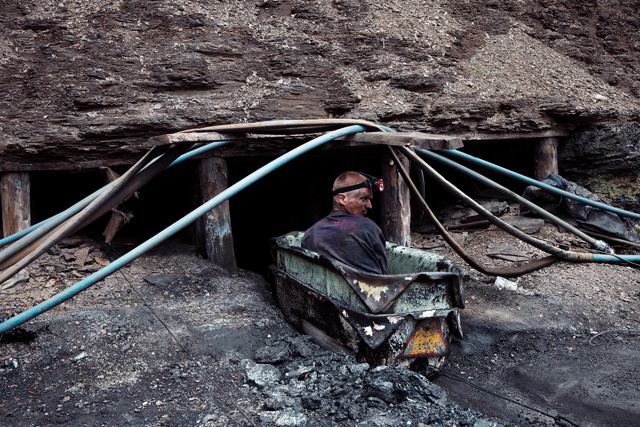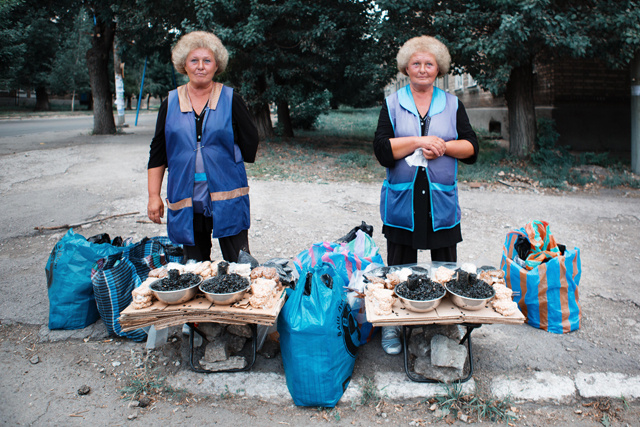![]()
Photo via Wikimedia Commons
It’s Wednesday morning, the first day of Al Sharpton’s National Action Network convention, and D’Juan Collins is telling me how the state took his son and won’t give him back. A slight man in a linen button-down and a Bluetooth earpiece, Collins is passing out flyers with a baby photo of his son Isaiah and a plug for his site, www.SaveIsaiah.com. Isaiah, now seven, was put into foster care in 2007, when Collins was sent to prison. When I ask what he was sent in for, he demurs. The conviction was overturned last year, he says, but Brooklyn Family Court and the foster care agency have declined to return custody of his son.
He has come here, to Sharpton’s annual civil rights confab, to get help. “I’m all about networking,” Collins explains, “because I can’t do this alone.”
If the Reverend Al Sharpton has a nexus of power, it is here, in the sweaty third-floor ballroom of the Sheraton Times Square, where more than 6,000 activists have assembled to talk shop at panels with titles like “American Holsters: How the Gun Won,” “The Role of Media in Crafting the Social Narrative,” and “Truth to Power Revival.” Outwardly, the annual civil rights hoedown is an essentially political event, a display of the influence Sharpton has aggressively cultivated over three decades in the national spotlight. But the convention is also a yearly pilgrimage for people, like Collins, who have been beaten by the system, screwed by insidious and structural racism that has stacked the deck against them. Because Al Sharpton, in addition to being a syndicated radio host, prime-time MSNBC talking head, and personal friend of the president, is still the guy you call when your kid gets shot.
Everyone I meet on Wednesday has a story. One woman at the conference tells me she’s here for the first time this year because her nephew was killed in Harlem last week, and she wants to “talk to the reverend about gun control.” Another spends the morning passing out yard signs that read: “My Civil Rights Were Violated.”
In some circles, Sharpton is considered ridiculous—a 90s race-riot relic turned smug cable-news hack. It’s easy to forget that he is probably the most powerful civil rights leader in the country, and a political kingmaker whose influence is evidenced by the parade of liberal pols who drop by his conference every year to pay their respects. New York Mayor Bill de Blasio was on hand Wednesday, as was Attorney General Eric Holder and New York Governor Andrew Cuomo. President Obama is headlining Friday.
What makes this year’s conference really interesting, though, is that it comes just days after a new report about Sharpton’s work as an FBI informant in a 1980s mob investigation. The piece, published by the Smoking Gun on Monday along with dozens of documents from the FBI, DEA, and NYPD, details Sharpton’s dealings with mafia bosses and drug dealers—ties the reverend has long sought to downplay—and appears to confirm the story that the FBI pressured Sharpton into fingering the mob after secretly recording a video of him meeting with an undercover agent posing as a Latin American drug lord offering to sell him kilos of “pure” cocaine. Sharpton has denied that version of events for years, saying that he approached the feds himself after receiving death threats from mobsters. “I was not and am not a rat, because I wasn’t with the rats,” he said at a press conference Tuesday. “I’m a cat. I chase rats.” As New York Daily News columnist Harry Siegel pointed out, if his story is true, Sharpton would likely be the first person in history to volunteer for a mafia sting.
![]()
Al Sharpton leads a 1989 protest after a mob of white teenagers killed Yusuf Hawkins, a black 16-year-old boy, in Bensonhurst. Photo via Wikimedia Commons
The fact that Sharpton dealt in the underworld 30 years ago isn’t really news. The value of the Smoking Gun report is mainly historic—it offers a glimpse into Sharpton’s past life, before Obama and MSNBC, Upper West Side apartments, and private cigar clubs. It takes us back to a time when Al Sharpton wore tracksuits, weighed 300 pounds, and incited riots. Which gets at the real question: Why are we still talking about Al Sharpton?
It’s actually one of the more enduring mysteries of American politics: How a former FBI informant with deep mob ties and a penchant for inflaming racial tensions could remake himself into an establishment power broker who gets invited to watch the Super Bowl at the White House.
The story of Al Sharpton, the one that comes through from the FBI accounts, begins with soul singer James Brown. Sharpton and Brown met in the early 1970s, and were joined at the hip for most of the 1970s and 80s. They even had matching haircuts.
![]()
Photo via Flickr user chris
In those days, Sharpton was a young civil rights activist looking to get involved in the entertainment industry. Through Brown and boxing promoter Don King, Sharpton got involved in concert tours, developing a sort of hybrid civil rights/music industry hustle that, according to reports, involved threatening to boycott or protest venues and labels unless they hired more black promoters, which in some cases included Sharpton. In the process, Sharpton collected a circle of famous friends that included Michael Jackson, Spike Lee, and Joseph Robinson, founder of Sugar Hill Records. This proximity to fame gave Sharpton a reputation for aggressive self-promotion and attention-whoring that has stuck with him throughout his career. It’s also how Sharpton himself became famous.
But what really thrust Sharpton into the spotlight was his involvement in the 1987 Tawana Brawley rape hoax. For those of you who weren’t sentient in 1987, here’s the gist: Brawley was a 15-year-old girl from Upstate New York who claimed to have been abducted and raped by a group of white men, including a cop. Sharpton and several other civil rights activists took on her case. Sharpton subsequently accused a local prosecutor of being one of Brawley’s attackers. Six months later, a grand jury investigation found that the whole episode was a hoax and that Brawley had never been assaulted at all. (The prosecutor later won a defamation lawsuit against Sharpton and Brawley’s other advisers.)
The incident could have brought Sharpton's career in public life to a grinding halt. Instead, it raised his profile, giving him a national following among African Americans upset over the media's treatment of Brawley. In the years that followed, Sharpton turned his civil rights protests into an art form, orchestrating massive street circuses that positioned him as a national spokesman for civil rights. When Amadou Diallo, an immigrant from Guinea, was shot to death by the NYPD in 1999, Sharpton organized a 13-day civil disobedience movement that resulted in 1,100 choreographed arrests. Diallo’s family was later rewarded $3 million in damages in a lawsuit against the city. That same year, Sharpton and his mentor, Jesse Jackson, shut down freeway traffic in Riverside, California, with protests against another fatal police shooting.
To his critics, Sharpton has embodied and exacerbated everything that is wrong about race relations in America. It hasn’t helped that the National Action Network, which Sharpton founded in 1991, is perennially in financial straits even as Sharpton himself has become wealthy. The organization has also been plagued by reports that it threatens to boycott corporations unless sizable donations are made.
Sharpton has been accused of race-baiting and demagoguery. It’s true that his protests, especially in the years after the Brawley case, often caused more problems than they solved. In 1991, for instance, he was accused of inflaming racial tensions during the Crown Heights riots, a four-day spree of racial violence spurred by the death of a seven-year-old black boy—killed by a Hasidic driver—and hours later, the murder of an Orthodox Jewish student who was pulled from his car and stabbed by a mob. Despite pleas from city officials, Sharpton insisted on leading a march during the riots, and later made disparaging remarks about "the diamond merchants in Crown Heights."
![]()
Sharpton leads a "Million Hoodie March" after the death of Trayvon Martin in 2012. Photo by Flickr user Michael Fleshman
But Sharpton also put racial profiling on the map, forcing politicians and the media to notice police brutality and entrenched racism in the criminal justice system. Whenever there was an instance of police brutality, Sharpton—and an entourage of civil rights lawyers and reporters—usually weren’t far behind. When race riots broke out over police brutality in Cincinnati in 2001, Sharpton was on the scene, demanding federal oversight of police forces, not just in Cincinnati, but everywhere. After NYPD officers were acquitted in the 2006 shooting of Sean Bell, Sharpton orchestrated a citywide “slowdown” march that shut down every bridge and tunnel going into Manhattan.
Politicians eventually realized that it was more dangerous to ignore Sharpton than it was to deal with him. They started showing up at his Saturday-morning rallies in Harlem and inviting him to Gracie Mansion and the White House. Over time, Sharpton’s approach softened. He lost weight, ran for president, cut his hair. And eventually, sometime after Obama’s first election, the reverend became the new, skinny Al Sharpton, a vegetarian who lives in a bachelor pad overlooking Broadway and dates a 35-year-old personal stylist.
The transformation is "incomparable,” said Hank Sheinkopf, a veteran New York political consultant who has worked for Bill Clinton and Michael Bloomberg, among others. “His repositioning and reconfiguration over the last 35 years is unequaled by anyone else in public life.”
At the National Action Network conference, there is no sign that the Smoking Gun’s FBI-informant report has lessened his support among prominent politicians. "I just want everyone to know I am proud to stand with Reverend Sharpton," De Blasio tells the crowd. "Because, to borrow a phrase from our youth, Reverend, 'You're the real thing.’”
The truth is, despite the makeover and the young girlfriend, Sharpton isn't that different. For better—and for worse—he is still the first guy to show up when your husband is roughed up by the cops, or when your teenage son is killed by an unhinged neighborhood watchman. The difference is that Sharpton used to be fighting the system—and now he is the system. So maybe it's not Sharpton who changed—maybe it was everyone else.
“If people have a problem, or they are in a situation, he goes to them, and he investigates and fights for them,” says Carole Willis, an elderly National Action Network volunteer, when I ask her why people still like Sharpton. “He’s a powerful man.” Later, Willis asks for a piece of paper from my notebook. “I want to give Eric my phone number,” she explains. “I have something I need him to help me with.”
It takes me a minute, and then I realize she is talking about the Attorney General.
 Screencap via 12 News
Screencap via 12 News Screencap via WSB-TV2
Screencap via WSB-TV2



































